Imagine stepping into a bustling marketplace, a kaleidoscope of sights and sounds, each stall vying for your attention with bright colors and bold promises.
This is the world of digital advertising platforms – a dynamic, ever-evolving landscape where brands jostle for the spotlight in the digital arena.
These platforms are the stages where the art of persuasion meets the science of technology, creating a symphony of targeted marketing strategies aimed at captivating the digital audience.
Best Digital Advertising Platforms
What Are Digital Advertising Platforms
Digital advertising platforms are the high-tech conduits through which businesses can project their marketing messages across the digital universe.
Think of them as the conductors of an orchestra, each wielding their baton to harmonize various elements – data analytics, user behavior, creative content, and advertising technology.
They are the bridges that connect the world of business with the digital consumer, ensuring that the right message meets the right eyes at the perfect moment.
These platforms are not just tools; they are ecosystems in themselves, vibrant and pulsating with data-driven insights and creative potential.
They are the engines that power the digital marketing machine, turning raw data into refined strategy, much like how a filmmaker turns a script into a cinematic masterpiece.
Best Digital Advertising Platforms – Introduction
Embarking on a journey through the best digital advertising platforms is tough if you don’t know what you’re looking at.
Each platform, with its unique capabilities and specialties, resonates with a specific audience and fulfills particular marketing objectives.
From the high-speed adrenaline of real-time bidding and programmatic buying to the narrative-driven, emotionally engaging world of content marketing, these platforms offer a spectrum of tools for the discerning marketer.
These platforms are where brands showcase their stories, each offering a distinct flavor and character – from the visually-driven, trendsetting realms of social media platforms to the precision-targeted, professional networks where businesses connect with key demographics.
Digital advertising platforms are popping up all over the place and they have become an essential part of any marketing strategy.
- So, which digital platforms should you use?
- How can you make sure that your digital advertising campaigns are effective?
- What are some things to consider before choosing a platform?
We’ve got answers!
What Are The Best Digital Advertising Platforms?
Identifying the best digital advertising platforms depends on the specific goals and audience of a campaign.
However, some platforms have risen to prominence for their effectiveness and wide reach. Here’s a taster of some of the top digital advertising platforms that we’re going to cover in this article:
Google Ads
The titan of the digital advertising world, offering unparalleled reach through search and display network advertising.
It’s a versatile platform capable of targeting a vast array of keywords and demographics.
Facebook Advertising
A social juggernaut, providing businesses with rich targeting options based on user interests, behavior, and demographics. Its vast user base makes it a fertile ground for brand exposure.
Instagram Ads
A visual storyteller’s paradise, ideal for brands with a strong visual identity looking to engage with a younger, image-conscious audience through compelling imagery and video.
Linkedin Advertising
The go-to platform for B2B marketing, excelling in connecting professionals and businesses. It’s perfect for targeted campaigns aimed at industry-specific audiences.
Twitter Ads
A platform where immediacy and relevancy are key. Ideal for brands looking to engage with audiences on trending topics and quick, impactful messaging.
Youtube Advertising
The digital equivalent of a TV network, offering video advertising options that range from short bumper ads to longer, narrative-driven content. It’s a hub for creative storytelling with a broad audience reach.
Each platform, with its distinct flavor and capabilities, offers unique opportunities for brands to craft their digital narratives.
Just like a director choosing the right set for a scene, marketers can leverage these platforms to place their brand story in front of the right audience, at the right time, in the most effective way.
1. Facebook Ads
Facebook Ads reign as a titan in the social media advertising world. With an astounding user base of over 2.8 billion monthly active users, Facebook’s reach is unparalleled, spanning diverse demographics globally.
This platform excels in providing advertisers with sophisticated targeting capabilities.
Advertisers can tailor their campaigns based on a plethora of user data, including age, gender, location, interests (like hobbies and page interactions), and behaviors (such as purchase history and device usage).
Facebook’s ad formats are equally versatile, ranging from traditional photo and video ads to innovative carousel ads, which allow multiple images or videos in a single advertisement. The platform also offers stories ads, capitalizing on the growing trend of ephemeral content.
The strength of Facebook Ads lies not just in its extensive reach but also in its robust analytics tools, which provide deep insights into campaign performance.
Its seamless integration with Instagram amplifies its effectiveness, allowing advertisers to reach an even wider audience.
Digital Federal Credit Union
Digital Federal Credit Union, better known as DCU, is a not-for-profit financial cooperative owned by and operated for our members.
Try Digital Federal Credit Union
2. Google Ads
Google Ads commands the search engine advertising sector, holding over 92% of the global search engine market.
This dominance gives advertisers access to the vast majority of internet users who turn to Google for their search needs.
The platform specializes in keyword-based targeting, enabling ads to appear precisely when users search for relevant terms.
This ensures that ads reach users with a high intent to engage or purchase, making the advertising more effective and cost-efficient.
Besides search ads, Google also offers display ads on websites, video ads on YouTube, and product-specific shopping ads, providing a comprehensive advertising solution.
Its pay-per-click model, where advertisers pay only when users interact with their ads, adds to its appeal.
The platform’s advanced analytics and wide array of ad formats make it a versatile choice for businesses of all sizes, seeking to maximize their online presence.
Google Ads
Write an ad & decide where you would like it to appear. Show ads to more customers on Google when they search for your products or services. Sign Up Today. Promote Your Website. Appear On Google Search. Only Pay For Results.
3. Youtube Ads
YouTube, with its over 2 billion logged-in monthly users, stands as a powerhouse in the video advertising domain.
The platform’s vast and diverse audience spends an average of 11.5 hours per month watching content, offering advertisers a fertile ground for engagement.
YouTube’s ad formats are tailored for impact, including skippable and non-skippable video ads, concise bumper ads, overlay ads, and sponsored cards, each providing unique ways to capture viewer attention.
The strength of YouTube Ads lies in their ability to offer a more immersive and engaging experience to the audience, thanks to the video-based content.
This leads to higher engagement rates and potentially more effective advertising outcomes.
For businesses seeking to make a lasting impression through dynamic and compelling storytelling, YouTube presents an ideal platform.
YouTube
YouTube is a video sharing service where users can watch, like, share, comment and upload their own videos. The video service can be accessed on PCs, laptops, tablets and via mobile phones.
4. Bing Ads
Bing Ads, often viewed as the underdog in comparison to Google, holds its own with a significant presence in the digital advertising space.
By powering ads on Bing, Yahoo, and other partner sites, it taps into a different demographic, potentially reaching audiences overlooked by Google.
This diversity can be a boon for advertisers looking to explore new markets or target specific niches.
One of the key advantages of Bing Ads is its cost-effectiveness. With generally lower competition and cost per click compared to Google, it offers a more budget-friendly option for small and medium-sized businesses.
The platform provides a range of targeting and ad format options, allowing for tailored campaigns that can resonate well with its unique user base.
Clever Ads
Best Online Advertising Tools with Clever Ads … The ultimate, free online advertising tools to launch and improve your digital marketing strategy.
5. Amazon Ads
Amazon Ads has emerged as a dominant force in e-commerce advertising. As the go-to online shopping destination, Amazon places products directly in the path of potential buyers, making it an invaluable platform for e-commerce businesses.
The site’s vast user base, coupled with its rich data on shopping habits and preferences, allows for highly targeted and effective advertising.
Ads on Amazon can take various forms, from sponsored product listings to display and video ads.
This versatility, combined with the platform’s direct link to purchase actions, makes Amazon Ads particularly potent for driving sales.
For businesses looking to boost their online retail presence, Amazon offers a direct and impactful advertising channel.
Amazon Ads
Amazon Advertising (formerly AMS or Amazon Marketing Services) is a service that works in a similar way to pay-per-click ads on Google: sellers only pay when shoppers click on ads (regardless of whether or not the item sells).
6. Instagram Ads
Instagram Ads, flourishing under the umbrella of Facebook’s social media empire, has become a sanctuary for visual storytelling.
With over 1 billion active users, Instagram is a haven for aesthetically driven content, making it a prime platform for brands with a strong visual appeal.
The platform’s user base skews younger, with a significant portion of users falling into the 18-34 age bracket, making it an ideal venue for targeting a youthful, style-conscious demographic.
The strength of Instagram lies in its high engagement rates, fueled by its visually rich content. Advertisers can leverage a variety of formats such as image ads, video ads, stories ads, and more recently, the immersive IGTV ads.
The seamless integration of ads into the user’s feed and stories ensures a non-intrusive user experience, enhancing the likelihood of engagement.
Instagram’s robust targeting capabilities, inherited from Facebook, allow for precise audience segmentation, from basic demographics to more nuanced interests and behaviors.
Instagram Ads
Instagram ads uses Facebook’s advertising system, which has probably the most powerful targeting ability. You can specify your target audience’s location, demographics, interests, behaviors, and more.
7. Tiktok Ads
TikTok has exploded onto the social media scene, quickly becoming a hub for viral content.
With over 1 billion active users globally, a majority of whom are Gen Z and young millennials, TikTok offers a unique platform for brands looking to tap into the latest trends and youthful energy.
The platform’s distinctive algorithm promotes highly engaging, creative content, giving advertisers the opportunity to go viral.
TikTok Ads come in various formats, including in-feed ads, brand takeovers, hashtag challenges, and branded effects.
The platform’s immersive full-screen format and short-form content encourage high engagement, with users spending an average of 52 minutes per day on the app.
TikTok’s creative and interactive ad formats, combined with its dynamic user base, make it an enticing platform for brands looking to make a bold and memorable impact.
TikTok Ads
TikTok For Business is an all-in-one tool for marketers to advertise on TikTok. Instead of devising their own strategy, the platform helps marketers through the entire process of creating advertisements, setting budgets, reaching target audiences, and analyzing campaign data.
8. Linkedin Ads
LinkedIn stands as the quintessential platform for B2B advertising and professional networking.
With over 774 million professionals globally, LinkedIn provides access to a highly educated and affluent audience.
This platform is particularly effective for targeting decision-makers and professionals across various industries, offering a more formal and business-focused environment compared to other social networks.
LinkedIn Ads enable advertisers to reach their audience through sponsored content, message ads, dynamic ads, and text ads.
The platform’s targeting capabilities are particularly suited for B2B marketing, allowing advertisers to segment audiences based on job title, industry, company size, and professional interests.
This precise targeting, combined with a contextually relevant environment, makes LinkedIn an ideal platform for businesses seeking to establish professional connections and drive thought leadership.
LinkedIn Ads
You can use Sponsored Content, Message Ads, Dynamic Ads, Text Ads, or a mix of all four. Sponsored Content appears directly in the LinkedIn feed of professions you want to reach, and comes in three different formats: single image ads, video ads, and carousel ads.
9. Taboola
Taboola has carved a niche for itself as a leader in content discovery and native advertising.
With a reach of over 1.4 billion unique users per month, Taboola specializes in placing sponsored content on high-traffic websites, seamlessly integrating it with the site’s organic content.
This approach offers a non-disruptive user experience, as the ads align with the user’s interests and the context of the webpage they are viewing.
The platform’s strength lies in its advanced predictive technology and wide network of publisher sites, which include major news outlets and entertainment websites.
Advertisers can use Taboola to drive traffic to their articles, blogs, videos, or product pages.
The platform’s native ad formats are designed to blend in with the website’s content, encouraging higher engagement rates.
Taboola’s detailed analytics and performance metrics also allow advertisers to optimize their campaigns effectively, ensuring that their content reaches the most relevant audience.
Taboola
Taboola is the world’s leading discovery & native advertising platform that helps people explore what’s interesting and new in the moment of next.
10. Bidvertiser
Bidvertiser presents itself as a unique player in the digital advertising space, offering a direct approach to advertisers and publishers.
This platform differs from traditional ad networks by allowing advertisers to bid for ad space directly on websites, which can lead to more competitive pricing and tailored ad placements.
Bidvertiser supports a variety of ad formats, including banners, sliders, pop-unders, and smartlinks, catering to a wide range of advertising needs.
One of the key advantages of Bidvertiser is its transparency and control. Advertisers can see exactly where their ads will be displayed and can manage their campaigns with detailed precision.
This direct bidding process can also result in lower costs compared to more prominent networks.
Although it doesn’t boast the same high traffic levels as larger ad networks, its focused approach can be highly effective for niche marketing and for advertisers looking for specific types of sites or audiences.
Bidvertiser
BidVertiser is an ad network that focuses on banners, pop under and slider advertising for both desktop and mobile. Tracking, reporting, and automatic (or manual) optimization are in place to help guarantee success when implementing a pay per click marketing campaign.
11. Revcontent
RevContent stands out in the realm of content-based advertising, focusing on native ads that blend seamlessly with website content.
It prides itself on offering high-quality content recommendations, ensuring that the ads are relevant and engaging to the website’s audience.
With a commitment to preserving user experience, RevContent’s platform integrates ads in a way that feels natural and unobtrusive.
This platform is particularly noted for its sophisticated targeting capabilities and its network of premium publishers.
RevContent’s analytics tools are robust, providing advertisers with in-depth insights into campaign performance and audience behavior.
For brands and content creators focused on driving meaningful engagement through quality content, RevContent offers a compelling solution.
RevContent
Revcontent is a content marketing software designed to help businesses create and publish digital content across websites and manage marketing campaigns.
12. Buysellads
BuySellAds operates as a marketplace for buying and selling ad space, effectively bridging the gap between advertisers and publishers.
This platform is known for its straightforward approach, allowing advertisers to purchase ad space directly from a wide range of websites.
BuySellAds supports various ad formats, including display, native, email newsletters, and sponsored content.
BuySellAds
BuySellAds helps marketers diversify their advertising strategy, and publishers maximize their advertising revenue. For marketers, BuySellAds is a cross-channel advertising network that enables them to diversify their advertising strategy using a single platform.
The strength of BuySellAds lies in its diversity of options and its transparent pricing model. Advertisers have the freedom to choose from numerous sites and ad types, tailoring their campaigns to specific audiences and objectives.
This level of customization, combined with clear pricing and no minimum spend requirements, makes BuySellAds an attractive option for businesses of all sizes.
13. Adroll
AdRoll specializes in retargeting, a technique that targets users who have previously interacted with a brand, aiming to bring them back to complete a purchase or action.
This platform leverages powerful tracking and analytics tools to understand user behavior and then displays targeted ads across various websites and social media platforms to re-engage those users.
AdRoll is renowned for its sophisticated retargeting algorithms and its wide-reaching ad network.
The platform integrates with major e-commerce platforms, making it a favorite among online retailers looking to boost conversions.
AdRoll also offers additional services like email marketing and product recommendation ads, providing a comprehensive suite of tools for e-commerce marketing.
Adroll
AdRoll is a marketing and advertising platform that helps ecommerce brands grow revenue and save time on one streamlined platform.
Types Of Pay-per-click Advertising
Pay-per-click advertising is a digital marketing model where advertisers pay each time a user clicks on one of their online ads. There are several types of PPC advertising, each suited to different marketing goals:
1. Search Ads
These are text ads that appear on search engine results pages. For instance, Google Ads and Bing Ads are popular platforms for search advertising.
2. Display Ads
Display ads appear on websites within an ad network. They are typically image-based and can be seen on various websites that host ads.
3. Social Media Ads
These are ads that appear on social media platforms like Facebook, Instagram, LinkedIn, and Twitter.
They can be tailored to a highly specific audience based on the platform’s user data.
4. Remarketing/retargeting Ads
This type focuses on reaching users who have previously interacted with your website or mobile app.
5. Video Ads
Video ads are shown before, during, or after video content on platforms like YouTube and other video streaming services.
6. Shopping Ads
These are primarily used by e-commerce businesses to promote online and local inventory, boost traffic to websites or local stores, and find better-qualified leads.
Search Ads
These are the most common type of PPC advertising, prominently visible on search engine results pages like Google or Bing. When users type in a keyword, these ads appear at the top of the search results, labeled as ads.
Advertisers bid on keywords relevant to their target market, and the ads are often text-based, concise, and designed to respond directly to the user’s search query.
The effectiveness of search ads lies in their relevance and timing, as they reach users at the moment they are expressing interest in a particular topic or product.
Display Ads
Display ads are visual advertisements that appear on websites across the internet.
They can be found on news sites, blogs, and other places within a display network like the Google Display Network. These ads can be static images, animated graphics, or interactive media.
Display advertising is less about capturing an immediate need, like search ads, and more about generating interest or awareness for a product or service.
Video Ads
Video ads are typically found on video platforms like YouTube or embedded in other content like social media or websites.
They can range from short clips played before a user’s chosen video (pre-roll ads) to ads that appear alongside other video content.
Video ads are particularly effective for storytelling, brand building, and capturing user attention with engaging audio-visual content.
Main Benefits Of Using Display Ads
Display ads offer several advantages:
1. Visual Appeal
Display ads, with their utilization of images, videos, and dynamic graphics, stand out for their high visual appeal.
This visual nature makes them more likely to catch a user’s eye compared to text-only ads.
They are especially effective in scenarios where the visual representation of a product or service can significantly influence consumer behavior.
The use of colors, branding elements, and creative designs in display ads can also enhance the overall aesthetic appeal, making them memorable and striking.
2. Brand Awareness
Display ads are a powerful tool for building brand awareness. They can be strategically placed on websites and platforms frequented by the target audience, ensuring high visibility.
This constant exposure helps in reinforcing brand recognition and can aid in establishing a strong brand identity.
Unlike other ad formats that might require direct user interaction, display ads can passively imprint a brand’s image and message on the viewer’s mind, gradually building familiarity and trust.
3. Targeting Options
One of the key strengths of display ads is the depth of targeting options available. Advertisers can tailor their campaigns based on demographics (age, gender, location), interests (hobbies, lifestyle), and behaviors (browsing history, purchase patterns).
Advanced targeting can also include retargeting users who have visited certain web pages, providing a personalized advertising experience.
This level of targeting precision ensures that ads are served to the most relevant audience, increasing the effectiveness of the campaign.
4. Measurable Performance
The performance of display ads is highly measurable, with metrics such as impressions, clicks, conversion rates, and ROI readily available.
This data-driven approach allows advertisers to analyze the effectiveness of their ads and make informed decisions on how to optimize them.
A/B testing with different ad designs and targeting parameters can be employed to continually improve the performance of display ads.
5. Wide Reach
Display ads have a vast reach, thanks to networks like the Google Display Network, which covers over 90% of internet users worldwide.
This extensive reach enables advertisers to connect with a broad audience, spanning various websites and platforms, thereby increasing the chances of reaching potential customers regardless of where they are in the digital world.
Video Ads
Video ads have become a cornerstone of digital advertising due to their dynamic and engaging nature. These ads consist of video content used to promote a product, service, or brand within digital platforms.
Unlike traditional text or image-based ads, video ads incorporate audio-visual elements to tell a story, explain a concept, or showcase a product in action.
The rise of video content consumption across the internet, particularly on platforms like YouTube, Facebook, Instagram, and various streaming services, has made video advertising increasingly popular and effective.
The format ranges from short, snappy clips that last a few seconds to longer, more detailed narratives.
Formats And Platforms
ideo ads come in various formats including short bumper ads (typically 6 seconds), longer skippable ads, non-skippable ads, in-stream ads (which play during another video), and out-stream ads (appearing in non-video content).
They can be found on video platforms like YouTube, embedded in social media feeds, within apps, or on websites.
Creative Scope
The creative possibilities with video ads are vast. They can be produced in various styles – from high-quality professional shoots to simpler, user-generated content style videos.
This flexibility allows brands of all sizes to leverage video ads, regardless of their budget.
Interactivity And Features
Modern video ads often include interactive elements like clickable links, call-to-action buttons, and forms.
These features enhance user engagement and provide direct pathways for viewers to learn more or make a purchase.
Targeting And Personalization
Video ads can be highly targeted based on viewer demographics, interests, behavior, and more. Platforms offer sophisticated tools for segmenting audiences, ensuring that the video content reaches the most relevant viewers.
Measurable And Data-driven
Like other digital ad formats, video ads provide comprehensive analytics. Metrics such as view count, watch time, click-through rate, and conversions help advertisers assess the performance of their video ads and optimize them for better results.
The increasing preference for video content among internet users, combined with the advanced capabilities of digital platforms, makes video ads a powerful tool for marketers looking to engage audiences, build brand awareness, and drive conversions.
Benefits Of Using Video Ads
Engagement
Video ads are highly engaging, often more so than other ad formats. They have the capability to tell a story, present complex information in an easily digestible format, and capture the viewer’s attention quickly.
The dynamic nature of video – combining visual imagery, sound, and movement – creates a compelling narrative that can engage the audience more deeply than static images or text.
Emotional Connection
Videos have the unique ability to evoke emotions, whether it’s humor, excitement, sympathy, or inspiration.
This emotional connection can be a powerful tool for branding and storytelling, creating a memorable impression on the viewer.
Emotional resonance can lead to stronger brand loyalty and a deeper connection between the consumer and the brand.
High Conversion Rates
The engaging and emotionally resonant nature of video ads often leads to higher conversion rates.
Viewers who are captivated by a video ad are more likely to take action, be it making a purchase, signing up for a newsletter, or visiting a website.
The effectiveness of video ads in driving conversions makes them a preferred choice for many advertisers aiming to achieve specific business outcomes.
Expansive Reach
Platforms hosting video ads, such as YouTube, boast massive audiences. This expansive reach provides a significant advantage for advertisers looking to disseminate their message widely.
The ability to target specific segments within this large audience enhances the effectiveness of video advertising campaigns.
Mobile Users
Video content is particularly effective for mobile users, who often prefer consuming video content over text or images when using their devices.
The growing trend of mobile video consumption opens up new avenues for advertisers to reach audiences who are increasingly spending more time on their smartphones and tablets.
SEO Benefits
Including video content on a website can positively impact its search engine ranking. This is particularly true for content hosted on platforms like YouTube, which is owned by Google.
Embedding these videos on a website can improve the site’s content richness, potentially leading to higher search rankings and increased organic traffic.
Display ads and video ads each bring distinct advantages to a digital marketing strategy. Display ads are invaluable for visual impact and brand awareness, while video ads are unmatched in engagement, storytelling, and emotional connection.
The choice between them depends on the specific goals of a campaign, the nature of the product or service, and the target audience.
Social media ads are advertisements served on social media platforms like Facebook, Instagram, Twitter, LinkedIn, and TikTok.
These platforms offer a wealth of user data, which enables highly targeted advertising based on demographics, interests, behaviors, and more.
Ads can be tailored to fit into the natural flow of a user’s social media feed or be featured in stories or as sponsored messages.
The formats vary, from simple text and image ads to more complex carousel ads or video ads.
Benefits Of Using Social Media Ads
Targeted Reach
Social media platforms offer sophisticated targeting options. Advertisers can target users based on their age, location, interests, online behavior, and even life events, ensuring that ads reach the most relevant audience.
Variety Of Formats
From traditional image ads to videos, stories, and interactive polls, social media ads offer a range of formats to engage users.
Brand-user Interaction
These platforms allow for direct interaction between brands and consumers, providing opportunities for immediate feedback, customer service, and enhanced brand loyalty.
Analytics And Insights
Social media platforms provide detailed analytics, helping advertisers understand the performance of their ads and gather insights about their audience.
Flexibility And Scalability
Advertisers can start with a small budget and scale up based on performance.
The platforms are also flexible in terms of modifying and adjusting campaigns in real-time.
Retargeting Ads
Retargeting ads are a form of online advertising that targets users who have previously interacted with your brand, either by visiting your website, using your app, or expressing interest in certain products or services.
These ads serve as reminders or prompts, encouraging users to return and complete a purchase or engage with the brand.
Benefits Of Using Retargeting Ads
Increased Conversion Rates
Retargeting can significantly boost conversion rates, as it focuses on people who have already shown interest in your product or service.
Personalized Advertising
These ads can be personalized based on the user’s previous interactions, making them more relevant and effective.
Brand Recall
Retargeting helps in keeping the brand top-of-mind for potential customers who have not yet made a purchase decision.
Cost-effective
Since retargeting targets a more qualified audience, the return on investment is often higher compared to other forms of advertising.
Measurable Results
Like other PPC campaigns, retargeting offers measurable results, allowing advertisers to track success and ROI effectively.
Emerging Trends In Digital Advertising
As we advance into the future, digital advertising is rapidly evolving, embracing cutting-edge technologies and trends.
Artificial Intelligence (AI) is revolutionizing ad targeting and personalization, ensuring that ads reach the right audience with the right message.
Another significant trend is the rise of voice search advertising, catering to the increasing use of digital assistants.
Video advertising continues to dominate, especially short-form videos on platforms like TikTok, driving higher engagement rates.
The integration of Augmented Reality (AR) in ads is providing immersive experiences, dramatically boosting user interaction and engagement.
These trends signify a shift towards more interactive, personalized, and technologically integrated advertising strategies, making it imperative for advertisers to adapt and innovate continually.
Case Studies: Success With Digital Advertising Platforms
Several brands have achieved remarkable success through strategic use of digital advertising platforms.
For instance, a fashion retailer saw a 200% increase in sales by leveraging Instagram Ads, using visually appealing content and targeted influencer partnerships.
Similarly, a tech company utilized LinkedIn Ads to reach professionals, resulting in a 70% increase in B2B leads.
A small business capitalized on Google AdWords’ local targeting features, boosting in-store traffic by 50%.
These case studies illustrate that with the right approach and platform selection, digital advertising can yield substantial results, whether in increased sales, lead generation, or brand awareness.
Comparative Analysis Table For Digital Advertising Platforms
A comparative analysis table would be a valuable addition, summarizing key features, pricing, target audience, and other vital aspects of each platform.
This table would serve as a quick reference guide, helping businesses and marketers to compare and choose the most suitable platform based on their specific needs.
It should include columns for platform names, target audience, key features, pricing models, and unique selling propositions.
This comparative analysis will simplify decision-making for users by presenting a clear, concise comparison of each platform’s offerings.
PPC Advertising: Maximizing ROI
Pay-Per-Click (PPC) advertising, a cornerstone of digital marketing, offers a direct and measurable way to drive traffic and sales. PPC is not just about Google AdWords; it encompasses a variety of platforms including social media channels.
Key to success in PPC is understanding audience targeting, leveraging AI for bid optimization, and crafting compelling ad copy. A/B testing remains critical to refine ad strategies.
Integrating PPC with organic SEO strategies can lead to a synergistic effect, boosting overall digital presence. Advertisers should also focus on mobile optimization and voice search queries, as these areas are seeing rapid growth.
With the right approach, PPC can offer an impressive return on investment, making it a vital component of any digital advertising strategy.
Digital Advertising Platforms – Frequently Asked Questions (FAQ)
1. What Is The Difference Between PPC And SEO?
PPC is a paid advertising model where you pay for each click on your ad, while SEO (Search Engine Optimization) involves optimizing your website to rank higher in organic search results.
2. Can I Target Specific Locations With Digital Ads?
Yes, most digital advertising platforms offer geo-targeting, allowing you to target ads to specific locations, from broad regions down to specific zip codes.
3. How Do I Measure The Success Of My Digital Advertising Campaign?
Success can be measured using metrics such as click-through rate (CTR), conversion rate, return on ad spend (ROAS), and overall engagement metrics.
4. What Distinguishes Programmatic Advertising From Traditional Digital Advertising?
Programmatic advertising uses automated technology for buying and displaying ads, offering efficiency and precise targeting, unlike traditional methods which involve manual negotiations and purchasing.
5. How Significant Is Mobile Advertising In Today’s Digital Marketing Landscape?
With the majority of internet users accessing the web via mobile devices, mobile advertising is crucial. It requires mobile-optimized ads and an understanding of mobile user behavior.
6. Can Small Businesses Effectively Compete With Larger Ones In Digital Advertising?
Yes, digital advertising levels the playing field as it allows for targeted, cost-effective campaigns.
Small businesses can leverage niche targeting and local SEO strategies to compete effectively.
7. How Do Data Privacy Regulations Impact Digital Advertising?
Regulations like GDPR and CCPA necessitate transparency in data collection and use.
Advertisers must ensure compliance, which might mean revising targeting strategies and prioritizing user consent.
8. Is Influencer Marketing A Part Of Digital Advertising?
Yes, influencer marketing is increasingly significant in digital advertising. It involves partnering with influencers to tap into their audience, adding credibility and organic reach to your campaigns.
Best Digital Advertising Platforms – Summary
To navigate the digital advertising landscape, it’s essential to stay updated with current trends, leverage the strengths of various platforms, and remain compliant with data privacy regulations.
Businesses of all sizes can harness the power of digital advertising by aligning strategies with objectives and continuously analyzing performance data.
As the digital world evolves, advertisers who adapt, innovate, and maintain a user-centric approach will thrive.
The best digital advertising platforms offer a range of targeting options, formats, and user engagement opportunities.
From search ads that capture high-intent audiences to display and video ads that excel in visual storytelling and brand awareness, each platform has its strengths.
Social media ads stand out for their targeted reach and interactive formats while retargeting ads are unmatched in their ability to re-engage interested users.
Understanding these platforms and leveraging their unique features can greatly enhance the effectiveness of your digital marketing strategy.
Matt Crawford
Related posts
6 Comments
Leave a Reply Cancel reply
This site uses Akismet to reduce spam. Learn how your comment data is processed.



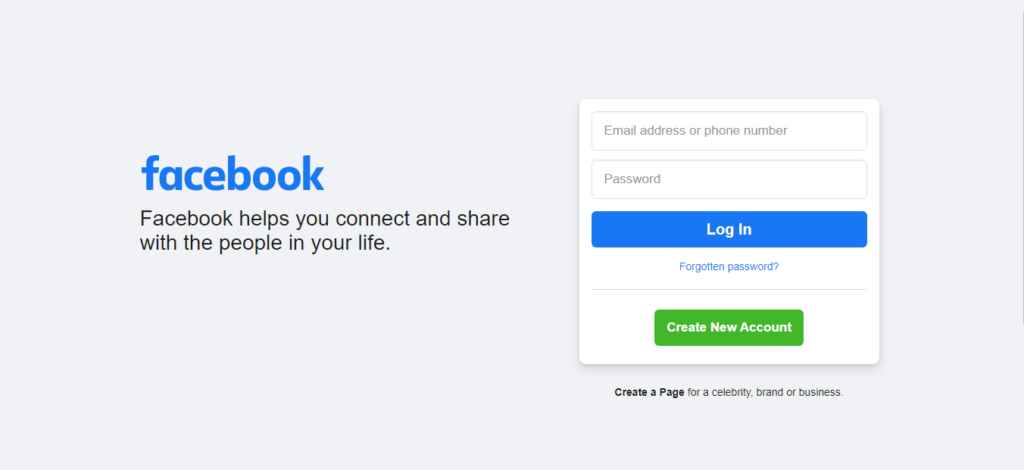

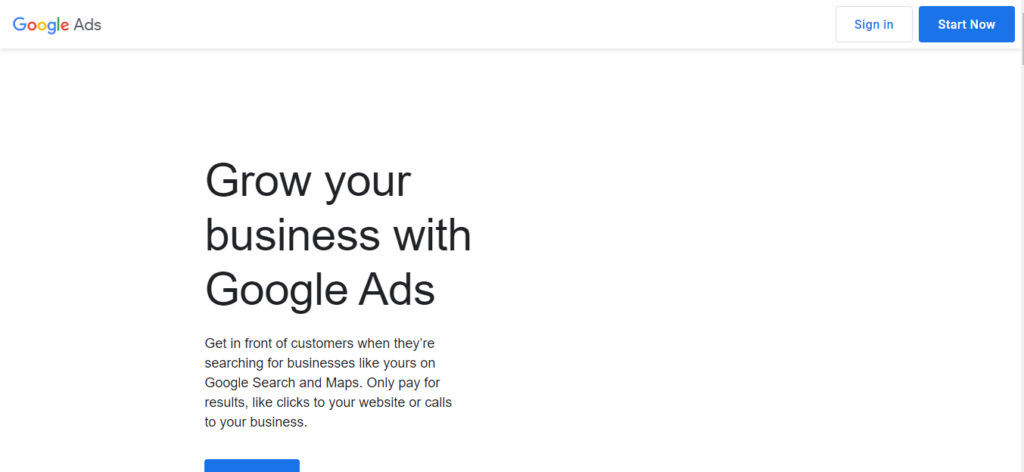

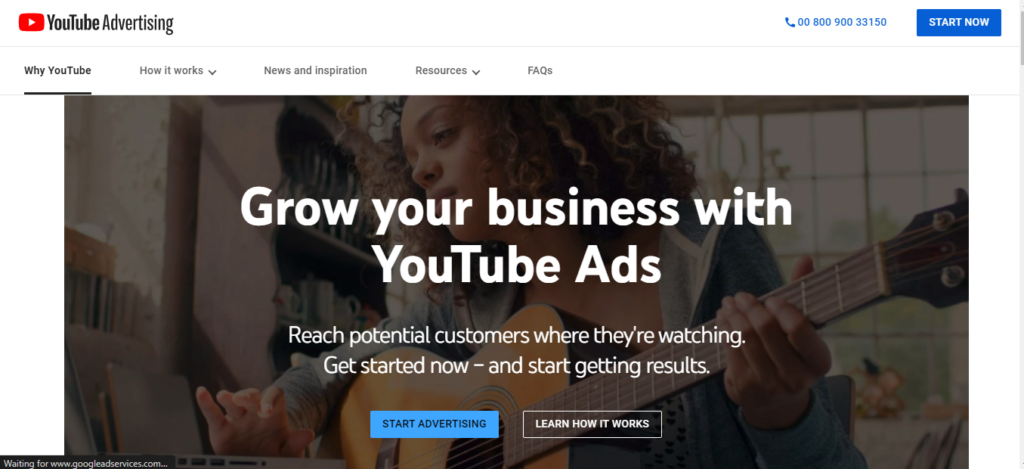

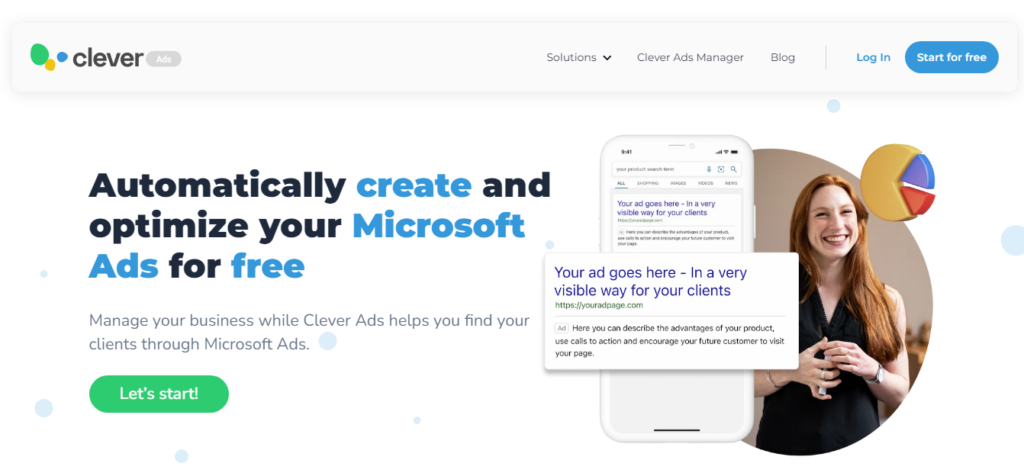

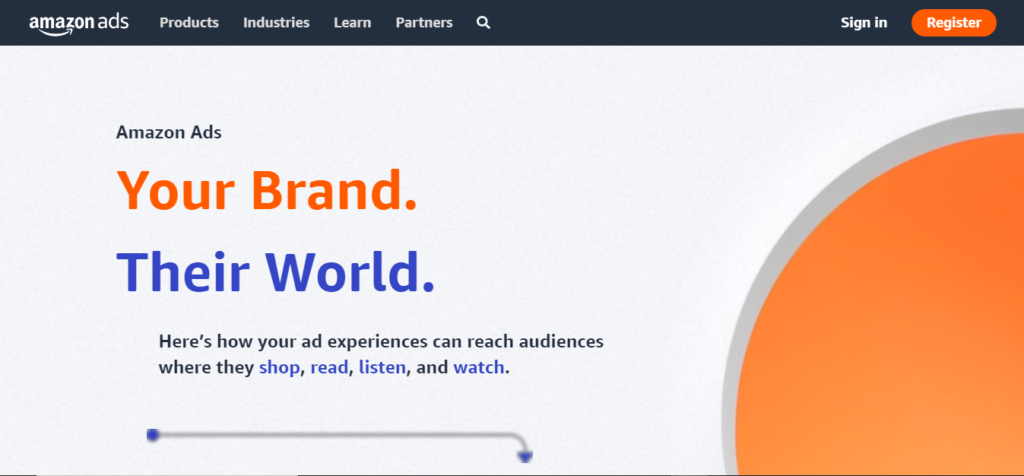




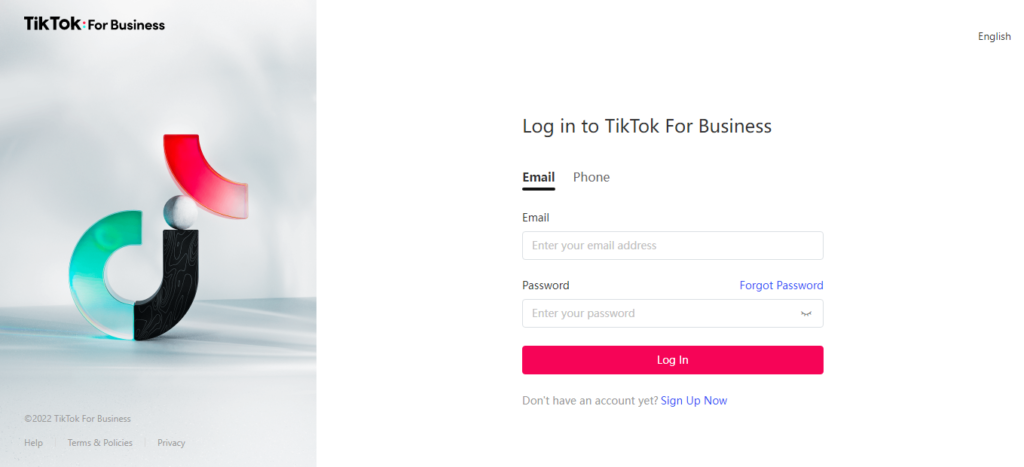
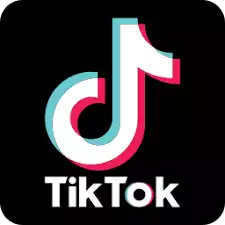


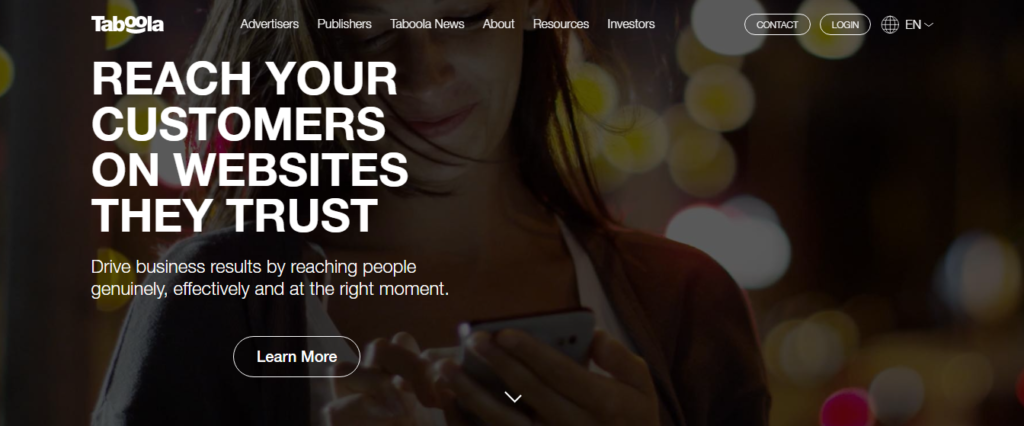




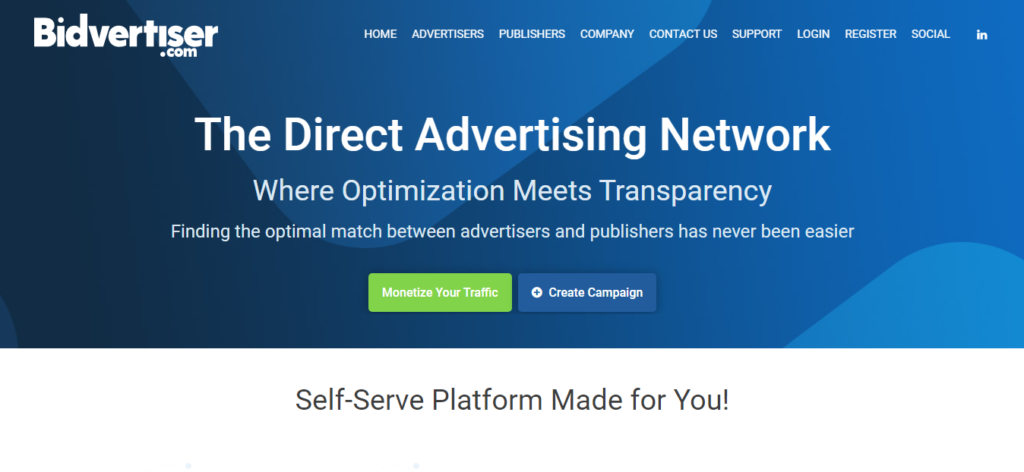



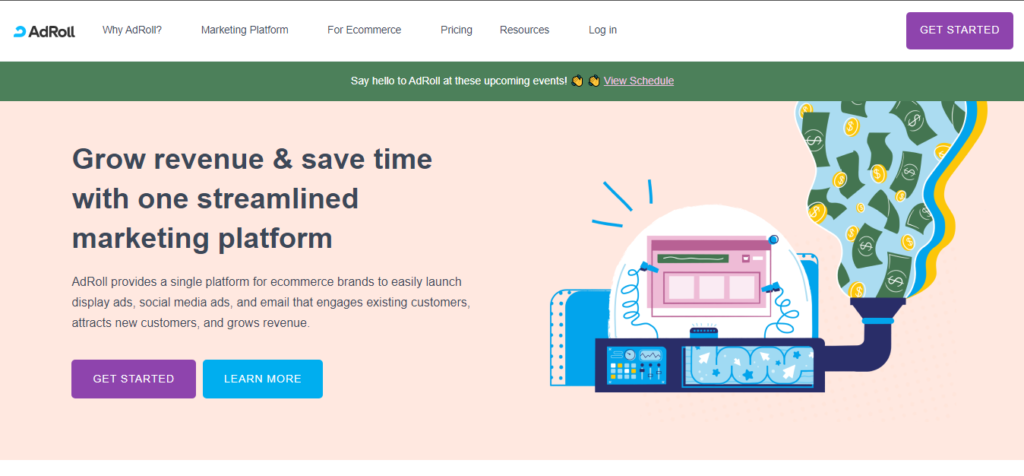


I disagree with this list.
1. Google
2. Taboola
3. Social Media
Fair enough. Thanks for the comment, Maghiyose.
Thanks for the information
No probs.
Great read regarding the most effective digital advertising platforms nowadays and their benefits for continued business success. Thanks for this.
Thanks, Logan. Appreciate it.